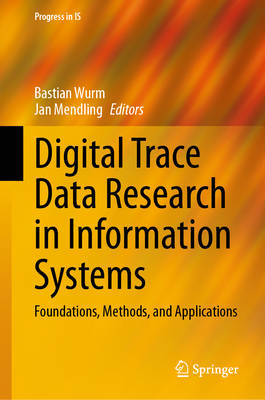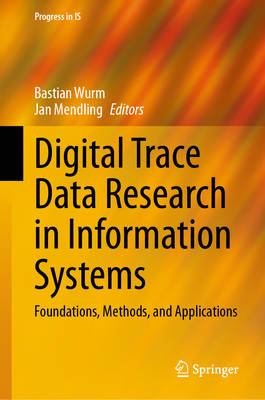
- Afhalen na 1 uur in een winkel met voorraad
- Gratis thuislevering in België vanaf € 30
- Ruim aanbod met 7 miljoen producten
- Afhalen na 1 uur in een winkel met voorraad
- Gratis thuislevering in België vanaf € 30
- Ruim aanbod met 7 miljoen producten
Zoeken
Digital Trace Data Research in Information Systems
Foundations, Methods, and Applications
€ 335,95
+ 671 punten
Omschrijving
This book provides a comprehensive overview of digital trace data research in information systems and reflects on its idiosyncrasies throughout all phases of a research project. It delivers important advice on how to construct, manage, and execute research with digital trace data, it clarifies the complex relationship of digital trace data to the reality it purportedly represents, it helps devising research programs that systematically explore key phenomena, and it assists in how to leverage insights from digital trace data for theory building. To this end, the book is organized into three interrelated parts. The first part focuses on the foundations of digital trace data research. It offers guidance on how to design and manage research projects that employ digital trace data and how it can be employed for theory development. The second part focuses on methods for digital trace data research and covers computational research methods and analysis techniques that support sense-making of digital trace data. Eventually, the third part presents selected examples for applications of digital trace research. It not only offers empirical insights into emerging phenomena but also showcases and reflects on the use of digital trace data. While the main target audiences for the book are researchers and graduate students that want to learn about or aim to apply digital trace data research in their own projects, professionals in industry may also apply digital trace data research to improve their understanding of how their organization works and implement improvements accordingly.
Specificaties
Betrokkenen
- Uitgeverij:
Inhoud
- Aantal bladzijden:
- 340
- Taal:
- Engels
- Reeks:
Eigenschappen
- Productcode (EAN):
- 9783032054968
- Verschijningsdatum:
- 9/12/2025
- Uitvoering:
- Hardcover
- Formaat:
- Genaaid
- Afmetingen:
- 155 mm x 235 mm

Alleen bij Standaard Boekhandel
+ 671 punten op je klantenkaart van Standaard Boekhandel
Beoordelingen
We publiceren alleen reviews die voldoen aan de voorwaarden voor reviews. Bekijk onze voorwaarden voor reviews.









